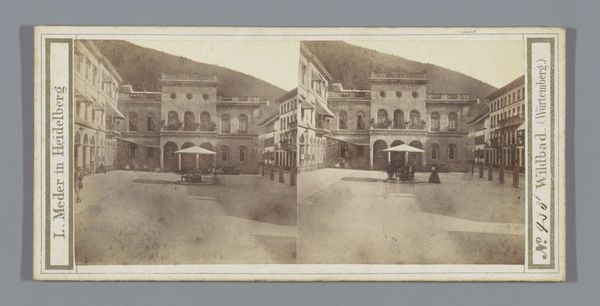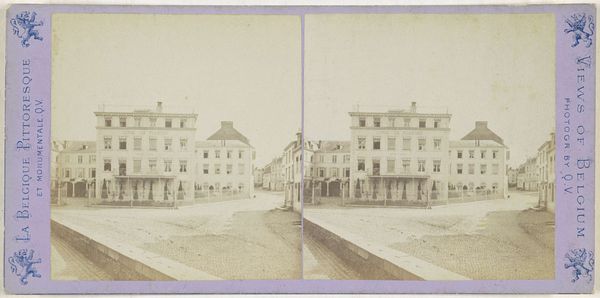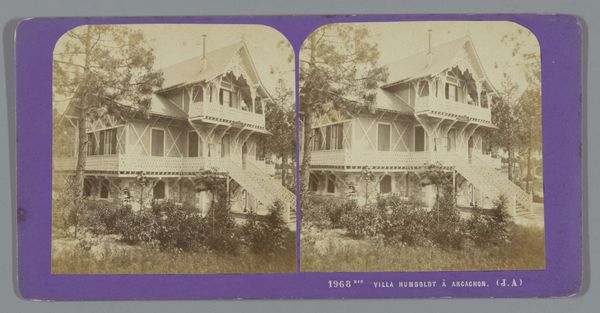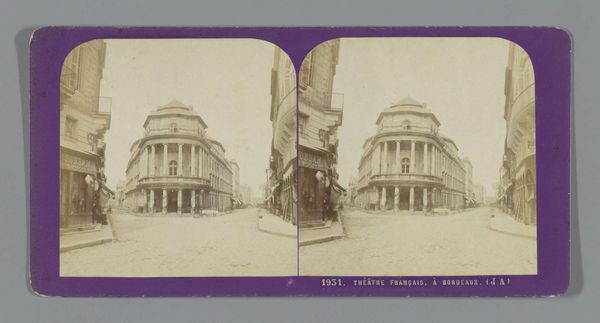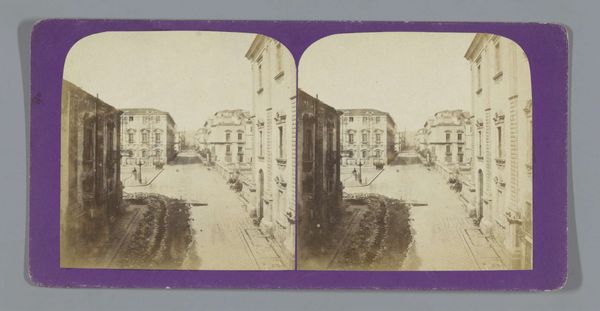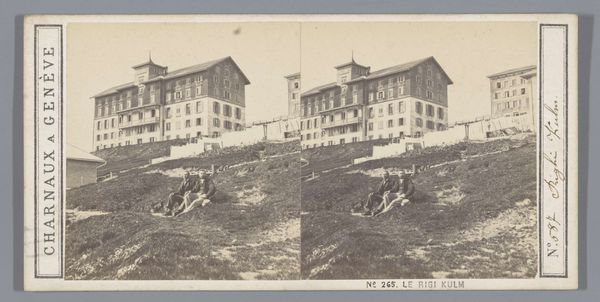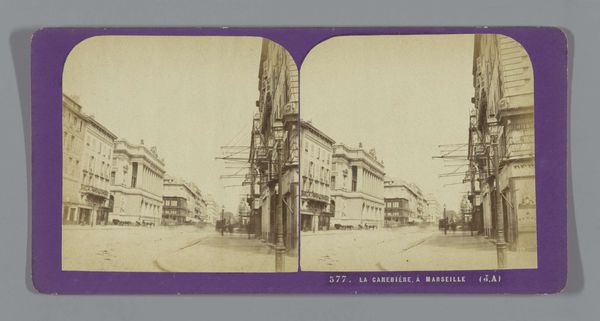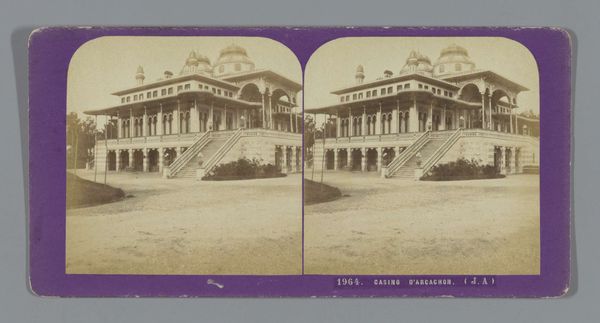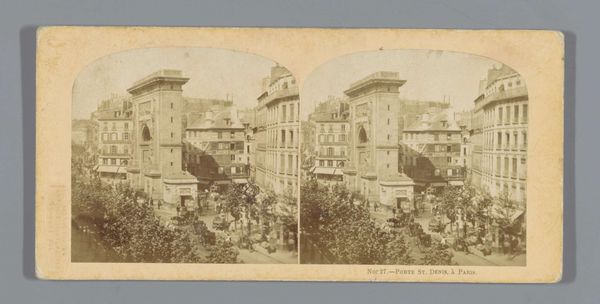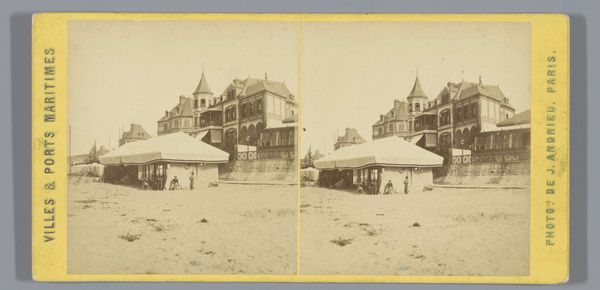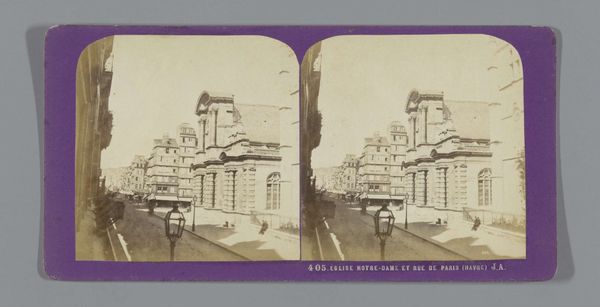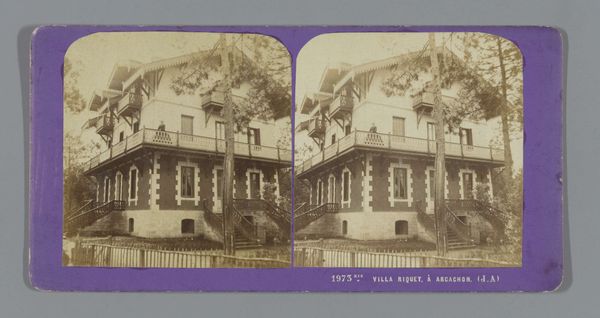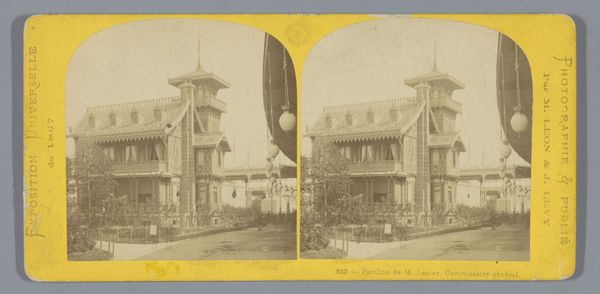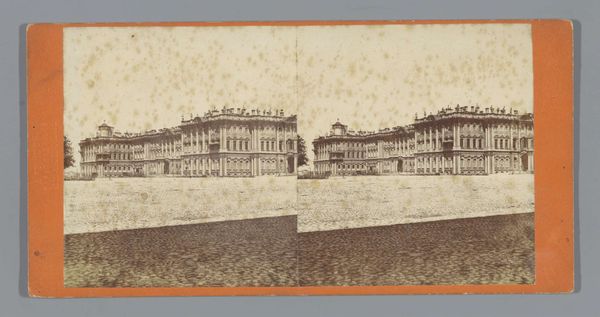
#
aged paper
#
toned paper
#
pasteup
#
water colours
#
paste-up
#
unrealistic statue
#
coloured pencil
#
watercolour bleed
#
watercolour illustration
#
watercolor
#
building
Dimensions: height 85 mm, width 170 mm
Copyright: Rijks Museum: Open Domain
Curator: Before us is a stereoscopic image titled "Exterieur van de Ville Péreire te Arcachon," created by Jean Andrieu sometime between 1862 and 1876. Editor: It's ghostly! A large wooden house captured with such precision, yet there's a hazy, dreamlike quality to the photograph. The materiality of the wood seems so tactile, but it's flattened into this sepia tone. Curator: The photograph's cultural value resides in its depiction of leisure and wealth in 19th-century France. Arcachon was becoming a popular resort town for the Parisian elite. Andrieu's photograph offers a glimpse into their lifestyle and the architectural styles they favored. Editor: And those styles... it looks like every piece of milled wood they could find went into constructing the ornamentation on the building, which is so characteristic of these vacation homes, celebrating the increasing availability of pre-fab and decorative materials afforded by industrialization. The house becomes a statement of access. Curator: Exactly, a show of material access, mirroring the larger societal changes brought about by industrial capitalism and impacting even leisure pursuits. These photographic depictions circulated widely, further fueling that aspirational lifestyle. It promoted social mobility through the illusion of easy attainment. Editor: I wonder about the photographer's process, here. These stereoscopic images would be assembled from individual images. We need precision alignment of each, to create this 3D depth, but in service of portraying architecture so rooted in production. It’s the pretense of effortless luxury supported by meticulous, painstaking labor. Curator: It also provided an escape—albeit a temporary and commercially constructed one—from the often grim realities of industrial labor. Photographs like this presented a sanitised vision of upward mobility and relaxation, furthering the capitalist dream. Editor: I hadn’t considered its impact that way, I am left thinking about how every level, from construction materials to how an image is captured, relies so much on the culture of fabrication. Curator: An apt reflection indeed.
Comments
No comments
Be the first to comment and join the conversation on the ultimate creative platform.
